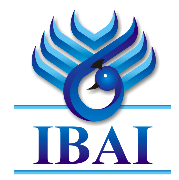L
A | B | C | D | E | F | G | H | I | J | K | L | M | N | O | P | Q | R | S | T | U | V | W | X | Y | Z
Laddering - Purchasing bond investments that mature at different time intervals.
Lapsed Policy - A policy which has been allowed to expire because of non payment of premiums.
Lapse Ratio - The ratio of the number of life insurance policies that lapsed within a given period to the number in force at the beginning of that period.
Lay Up Return - A return of premium allowed on expiry of a hull policy (without a total loss having occurred) for periods during which the vessel has been laid up in protected waters.
Leader - An underwriter whose judgement is so respected by other underwriters that they will follow his lead in accepting a risk in case of co-insurance
Leasehold - An agreement which gives a person the right to exclusive possession of a property.
Least Expensive Alternative Treatment - The amount an insurance company will pay based on its determination of cost for a particular procedure.
Leverage or Capitalization - Measures the exposure of a company's surplus to various operating and financial practices. A highly leveraged, or poorly capitalized, company can show a high return on surplus, but might be exposed to a high risk of instability.
Liability - Broadly, any legally enforceable obligation. The term is most commonly used in a pecuniary sense.
Liability Insurance - Insurance that pays and renders service on behalf of an insured for loss arising out of his responsibility, due to negligence, to others imposed by law or assumed by contract.
Licensed - Indicates the company is incorporated (or chartered) in another state but is a licensed (admitted) insurer for this state to write specific lines of business for which it qualifies.
Licensed for Reinsurance Only - Indicates the company is a licensed (admitted) insurer to write reinsurance on risks in this state.
Limit Any One Bottom - The maximum amount at a cargo underwriters risk, under an open cover, in one location.
Limited Terms - Insurance conditions that provide limited cover (e.g. total loss only) Line The amount or percentage in a brokers slip or policy which establishes the extent of the underwriters liability. The written line is written the underwriter’s liability. The written line is written by the underwriter on the slip when he accepts the risk. The signed line is the underwriter’s proportion of the risk as shown in the policy.
Line Slip - A signing slip issued of a long term cover.
Line Stamp - A rubber stamp issued by a Lloyd’s underwriter. It incorporates the syndicates pseudonym and number and is impressed on the broker’s slip by the underwriter who inserts his line and reference.
Liquidity - Liquidity is the ability of an individual or business to quickly convert assets into cash without incurring a considerable loss. There are two kinds of liquidity: quick and current. Quick liquidity refers to funds--cash, short-term investments, and government bonds--and possessions which can immediately be converted into cash in the case of an emergency. Current liquidity refers to current liquidity plus possessions such as real estate which cannot be immediately liquidated, but eventually can be sold and converted into cash. Quick liquidity is a subset of current liquidity. This reflects the financial stability of a company and thus their rating.
Living Benefits - This feature allows you, under certain circumstances, to receive the proceeds of your life insurance policy before you die. Such circumstances include terminal or catastrophic illness, the need for long-term care, or confinement to a nursing home. Also known as "accelerated death benefits."
Lloyd's - Generally refers to Lloyd's of London, England, an institution within which individual underwriters accept or reject the risks offered to them. The Lloyd's Corp. provides the support facility for their activities.
Lloyds Organizations - These organizations are voluntary unincorporated associations of individuals. Each individual assumes a specified portion of the liability under each policy issued. The underwriters operate through a common attorney-in-fact appointed for this purpose by the underwriters. The laws of most states contain some provisions governing the formation and operation of such organizations, but these laws don't generally provide as strict a supervision and control as the laws dealing with incorporated stock and mutual insurance companies.
Location Clause - Used in cargo open covers this limits underwriters’ liability in any one location.
London Insurance Market Network (LIMNET) - An electronic data transfer system embracing a network of computers. This system is designed to reduce the flow of paperwork and improve the flow of information within the London insurance market.
Long Tail - A term used to describe a risk that may have claims arising long after the risk has ceased to attach. So that he can close the underwriting account for the year it is often necessary for an underwriter to arrange reinsurance protection to cover claims which may arise after the account has been closed.
Long Term - A policy exceeding 12 months.
Loss - Generally refers to the amount of reduction in the value of an insured's property caused by an insured peril. In an insurance sense it usually does not mean "misplacing" an item.
Loss Adjustment Expenses - Expenses incurred to investigate and settle losses.
Loss and Loss-Adjustment Reserves to Policyholder Surplus Ratio - The higher the multiple of loss reserves to surplus, the more a company's solvency is dependent upon having and maintaining reserve adequacy.
Losses and Loss-Adjustment Expenses - This represents the total reserves for unpaid losses and loss-adjustment expenses, including reserves for any incurred but not reported losses, and supplemental reserves established by the company. It is the total for all lines of business and all accident years.
Loss Control - All methods taken to reduce the frequency and/or severity of losses including exposure avoidance, loss prevention, loss reduction, segregation of exposure units and noninsurance transfer of risk. A combination of risk control techniques with risk financing techniques forms the nucleus of a risk management program. The use of appropriate insurance, avoidance of risk, loss control, risk retention, self insuring, and other techniques that minimize the risks of a business, individual, or organization.
Loss of Specie - A charge in the nature or character of insured goods so that they are no longer the thing insured. (see also “Actual Total Loss”)
LPSO - Lloyd’s Policy Signing Office.
Loss Ratio - The ratio of incurred losses and loss-adjustment expenses to net premiums earned. This ratio measures the company's underlying profitability, or loss experience, on its total book of business.
Loss Reserve - The estimated liability, as it would appear in an insurer's financial statement, for unpaid insurance claims or losses that have occurred as of a given evaluation date. Usually includes losses incurred but not reported (IBNR), losses due but not yet paid, and amounts not yet due. For individual claims, the loss reserve is the estimate of what will ultimately be paid out on that claim.
Losses Incurred (Pure Losses) - Net paid losses during the current year plus the change in loss reserves since the prior year end.






